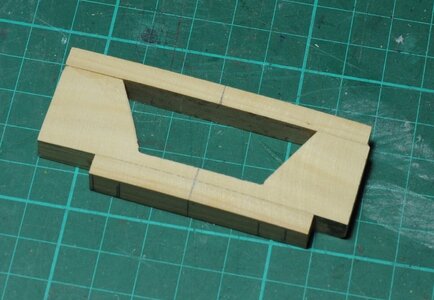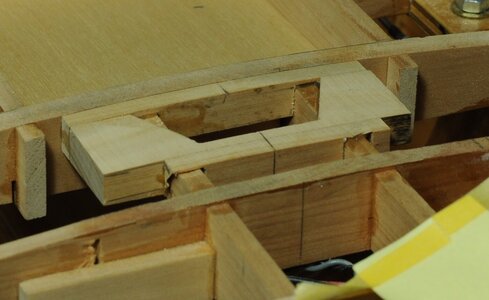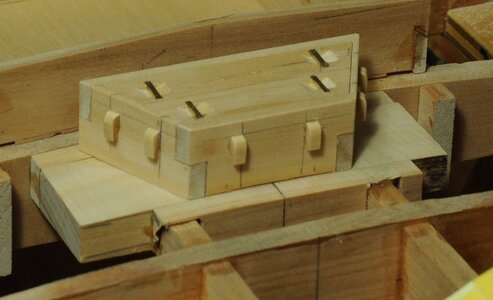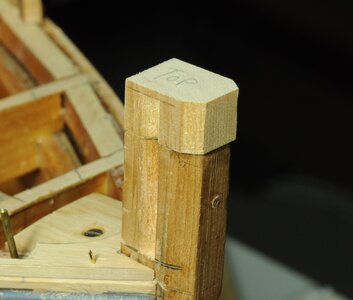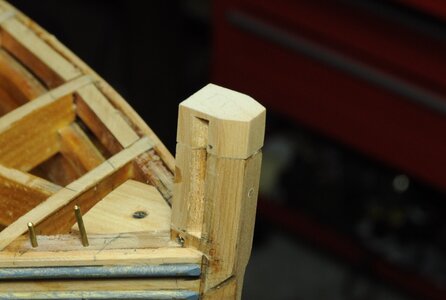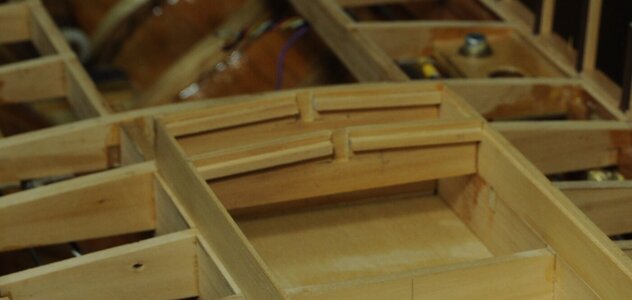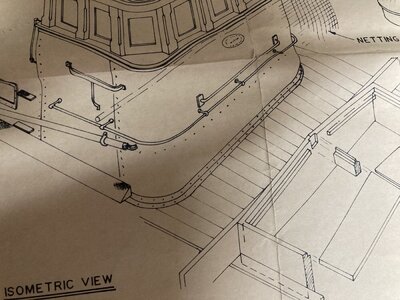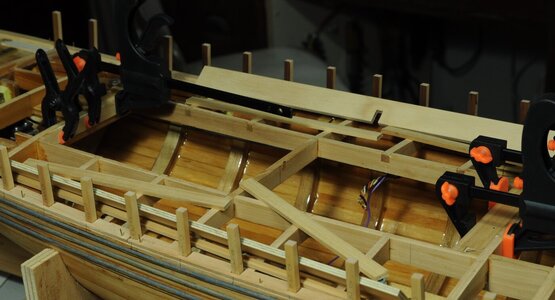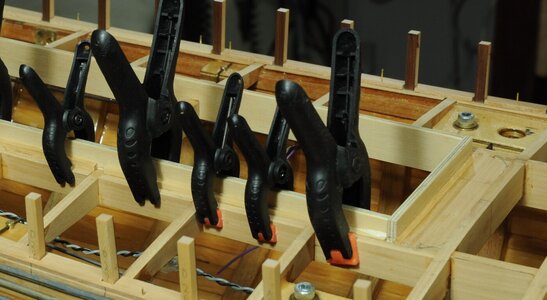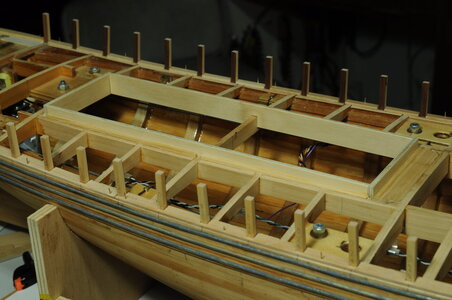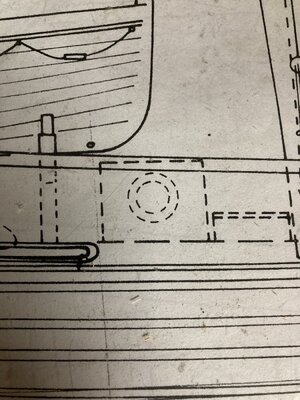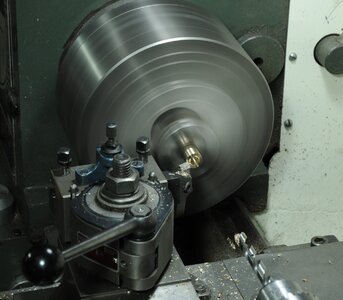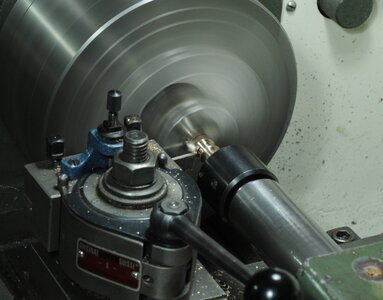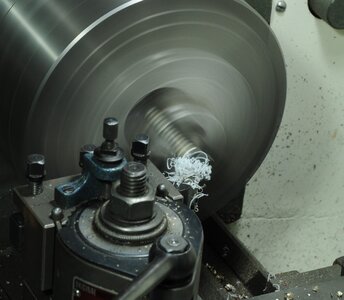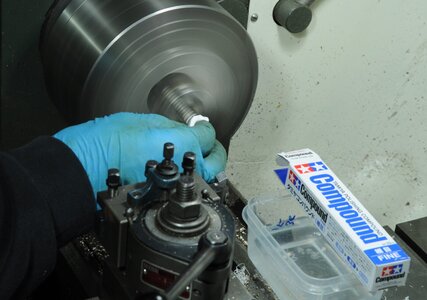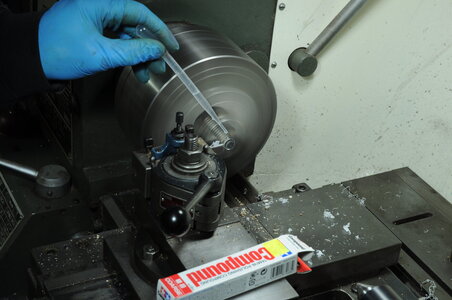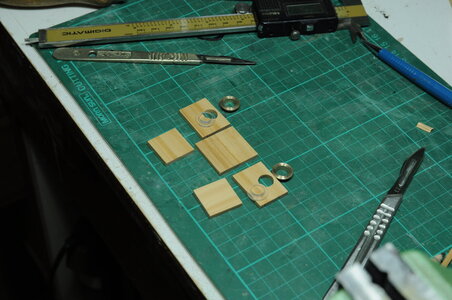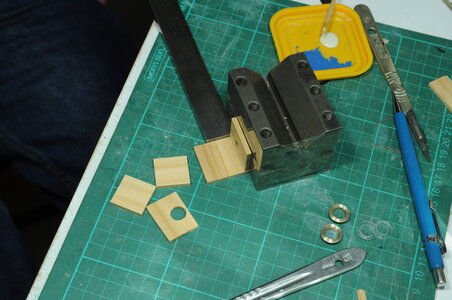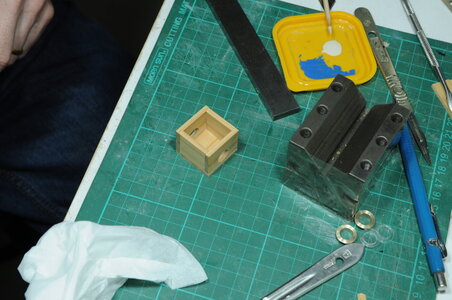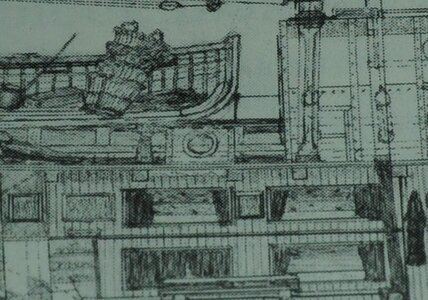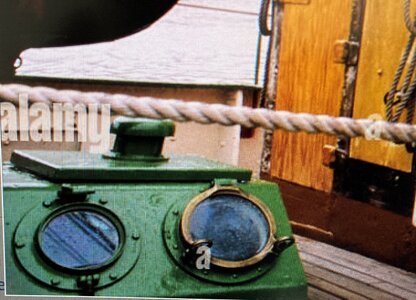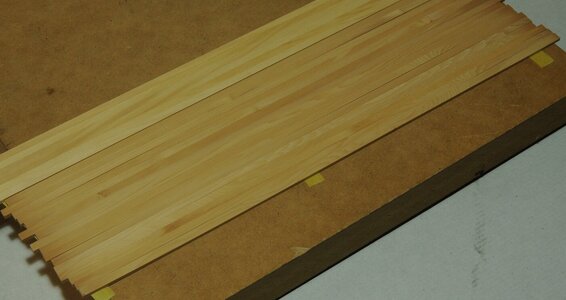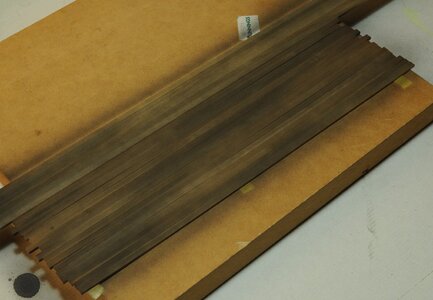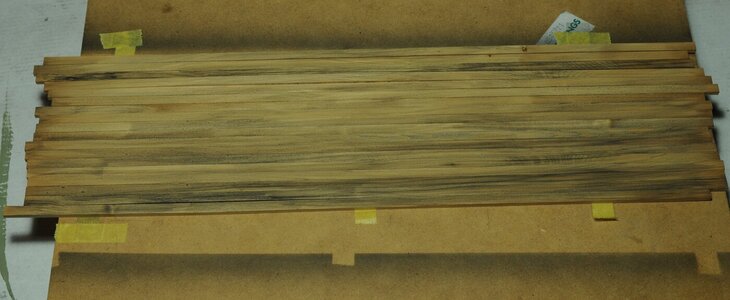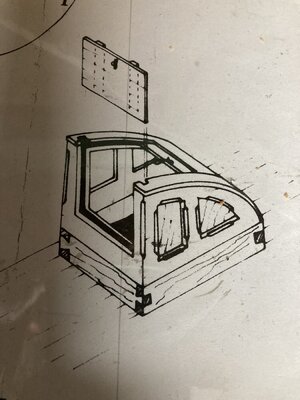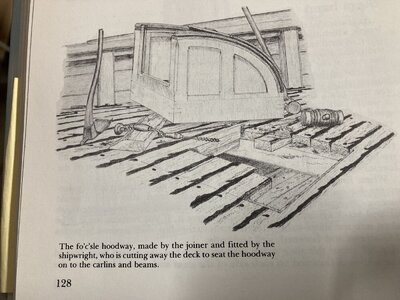Thanks for your support John,Fantastic workmanship and photos Steve, lot's of info to digest,
Best regards John,
Cheers,
Stephen.
 |
As a way to introduce our brass coins to the community, we will raffle off a free coin during the month of August. Follow link ABOVE for instructions for entering. |
 |
 |
The beloved Ships in Scale Magazine is back and charting a new course for 2026! Discover new skills, new techniques, and new inspirations in every issue. NOTE THAT OUR FIRST ISSUE WILL BE JAN/FEB 2026 |
 |
Thanks for your support John,Fantastic workmanship and photos Steve, lot's of info to digest,
Best regards John,
Hi Stephen,Hatch cover Handles.
The hatch cover handles started by cutting a small groove using an even smaller woodruff cutter than before to rough out the width and length, reusing the jig made for making the recess.
View attachment 259862
One little trick to find out when the cutter is getting close to touching the job is to use a piece of paper, as you slowly move the job towards the cutter it will start to grab the paper then you know you are getting close.
View attachment 259863
I set the stops on the mill to give me a repeated slot length, this was done with a bit of back and forth try a bit and check taking my time, even though I had a couple of spare pieces I didn’t want to stuff any up.
View attachment 259864
Next thing was to get some brass strip that was 1.3mm x .5mm something I didn’t have in stock, though I had some Brass sheet .5mm thick, all I had to do is cut some strips 1.3mm wide. I know from previous experience that cutting such thin strips is problematic I therefore decided to use one of the zero clearance saw table inserts I bought with the saw.
View attachment 259865
Using a .5mm wide slitting blade I cut through the insert until I got to a height I was happy with then removed the insert and carefully added a very small amount of clearance so the slitting blade would not rub.
View attachment 259866
When it came to cutting the .5mm sheet I stuck it to an old piece of ply wood using double sided tape to provide some support, set the required thickness and cut a few strips.
View attachment 259867
After cleaning up the double sided tape which was by now getting quite ordinary because of the cutting oil I used when cutting, I started cutting it into the required lengths.
To do this I used 2 pieces of scrap to trap and support the strip while I cut it, this preformed 2 functions one to prevent the piece from deforming the other to prevent it flying across the room at the end of cut, these 2 things I have learnt the hard way in the past.
View attachment 259868View attachment 259869View attachment 259870
Now I had the handles made and having roughly cut the slots on the mill for them to sit in I needed to finish off the slots, after making a bit of a mess of the first one, I then had a look around the workshop trying to find a suitable tool with no luck. Then I decided to modify a scalpel blade and turn it into a little chisel, this was quite easily done using a bench grinder, being careful not to overheat the blade.
View attachment 259871View attachment 259875
Then the process of cutting all of the slots to size began, this took me quite a while as I wanted a good fit for all of them.
View attachment 259878View attachment 259879View attachment 259880
Once all the slots were finished off I began gluing in the handles using Titebond 3.
View attachment 259881View attachment 259882
There are a couple of workers that came along in their Sunday best for a photo in the ship yard, they are quite happy with the progress.
View attachment 259883
At the end I am quite happy with the end result even though the handles seemed like a bit of an anti climax, what seems like a lot of work for little reward.
Still some more work to do on the Hatch coaming, and eventually painting blue.
Next up Fore room Hatch coaming and covers.
That’s it for the moment, thanks for looking in and stay safe.
Cheers,
Stephen.
Hi Jim,Absolutely in love with the way you work, and how much attention you put into each detail you are working on. It is not just what you do, it is the structural methodology and the way you process each and every step prior to execution.
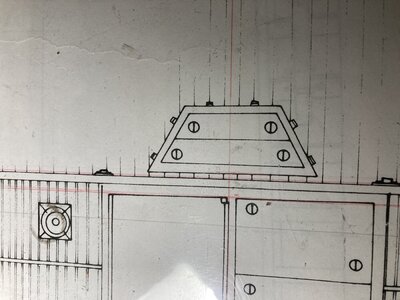
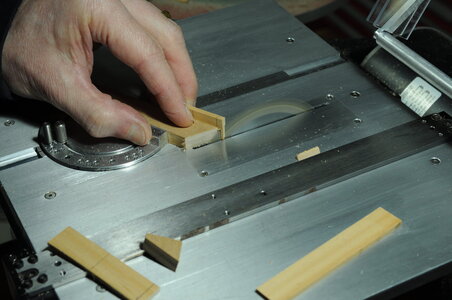
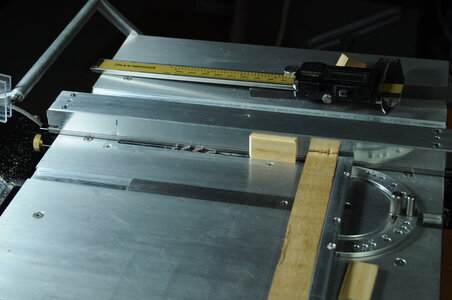
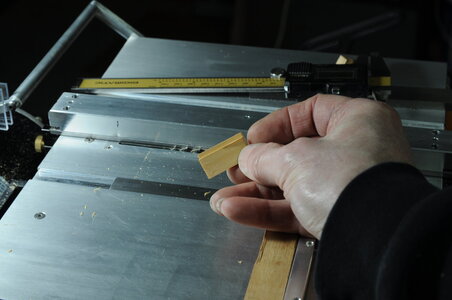
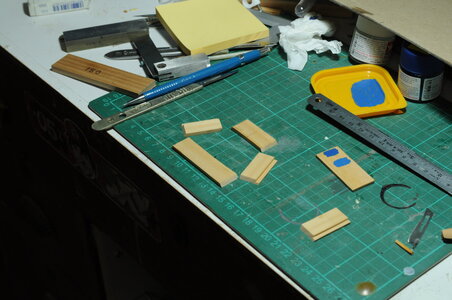
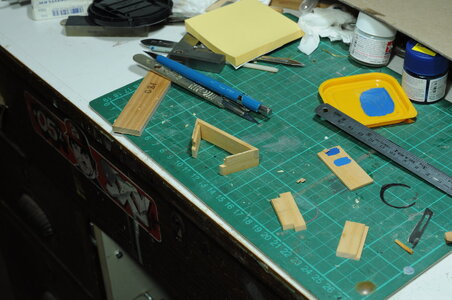
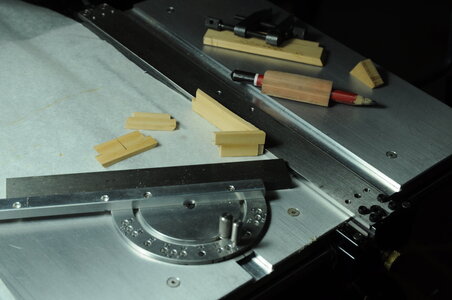
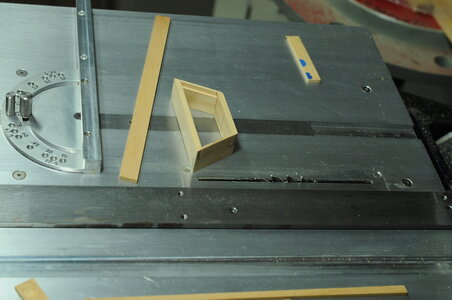
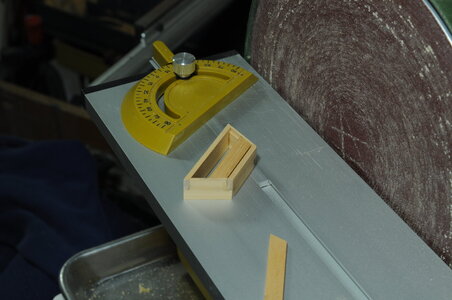
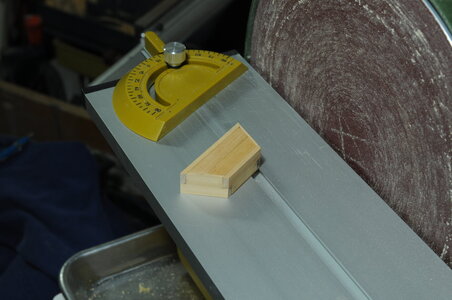
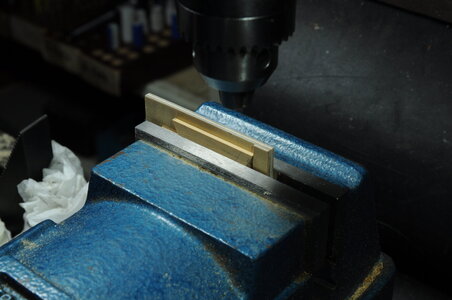
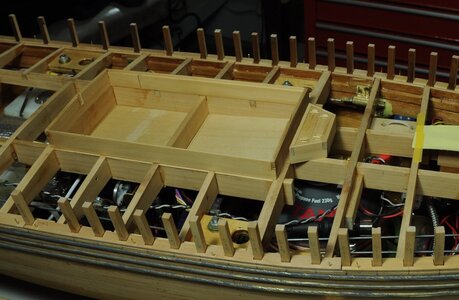
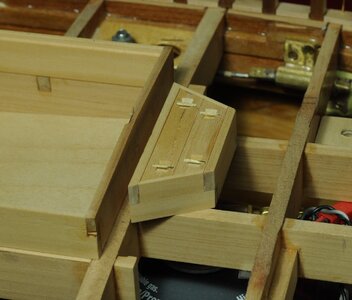
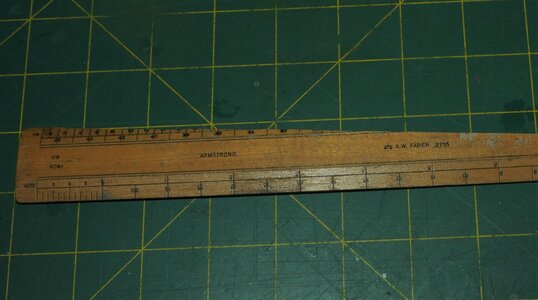
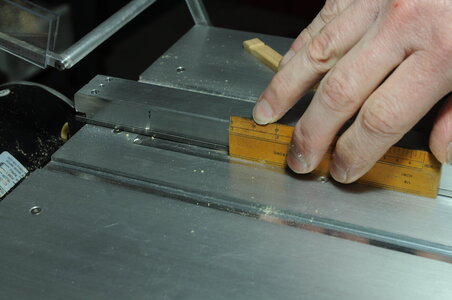
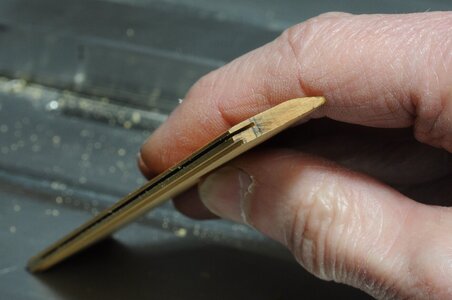
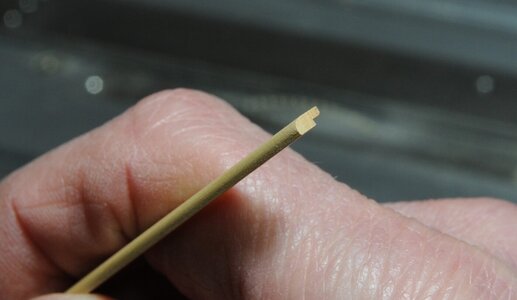
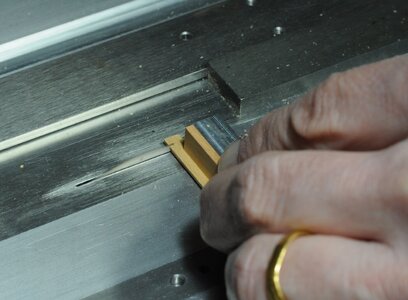
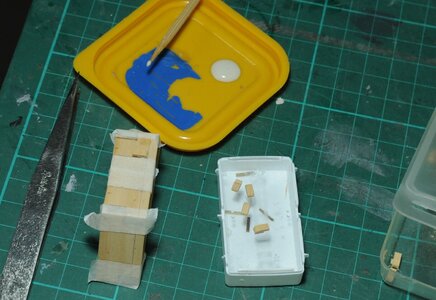
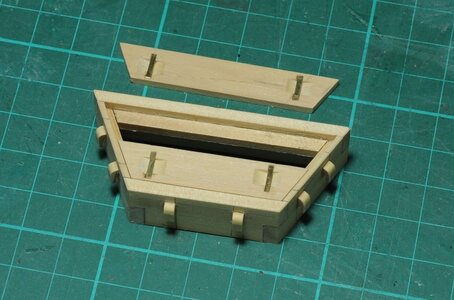
You really do know how to use your table saw for precise joinery. The trawler is coming along very well. Rich (PT-2)Foreroom Fish Hatch.
With the main hatch almost done I turned my attention to the Foreroom fish hatch and it’s covering boards.
View attachment 264411
Starting with the Coaming I decided to have another go at doing something of a joint, with the experience gained from my last attempts it turned out quite well.
Firstly I found the angle using the protractor off the saw then cut 4 pieces to length allowing enough length for the joint to be cut.
View attachment 264412
Then I cut a rebate on the side pieces for the covers to sit into using the saw, with the optional fence extension.
View attachment 264413View attachment 264414
Next back to the saw to cut most of the material away, finishing off the joints by hand.
View attachment 264415View attachment 264416
When it came to assembly I didn’t want some sort of weird shape with unequal angels so I set the assembly up on my saw and with a bit of fiddling got the result I wanted.
View attachment 264417
View attachment 264418
Once the glue had dried work started on the covers, these need to be a nice fit so care was taken when measuring and cutting, making then slightly longer and using the sander to carefully trim, I am quite happy with the fit hopefully enough clearance for paint.
View attachment 264419View attachment 264420
Next up cutting the recesses and grooves for the handles re-using the jig for main hatch boards. This went much the same as last time however I wasn’t able to hold these ones very well due to there smaller size consequently some chattering occurred causing a poor machined finish.
View attachment 264421
View attachment 264422
View attachment 264424
All sides were sanded and cleaned up then the finishing touch of making up “cleats”. These need to be made from stronger material than either Pines I have been using, one thing dad told me was that old good quality wooden rulers were made from quality wood even Boxwood, dad saved old rulers and I still have them.
View attachment 264425
Now I don’t know if the wood I used is Boxwood but the stuff I used is very fine grained and quite strong. The donor ruler was cut in a way to make a profile that could be then cut to length making more than enough “cleats”, the only down side is the grain isn’t running the best way for strength, so much for my bright idea, luckily the wood is quite strong enough even with the grain running the wrong way.
View attachment 264426View attachment 264427
Before cutting to length a radius was sanded on.
View attachment 264428
After setting up the saw cutting off “cleats” was easy, the photo doesn’t show it but I put a piece of scrap over the “cleat” to prevent them flinging off into who knows where.
View attachment 264429
With enough “cleats” cleaned up I marked their positions as per drawing and added some masking tape to help align what are quite small parts, then they were glued on.
View attachment 264431
View attachment 264430
That’s it for the moment, thanks for looking in and stay safe.
Cheers,
Stephen.
Have you ever tried to suck an egg???? I tried long ago without any success. Not enough lung power I guess. I don't recall why other than a challenge to do so. Rich.Thanks Rich,
I hope I am giving some tips/ideas to others as well, probably more like showing how to suck egg's.
Moving forward most of the time, long way to go yet.
Cheers,
Stephen.
I think that I was turning blue in the face or maybe red!!! Getting a good lip seal was part of the trick, I think, which was also why I gave up trying to learn to play a bag-pipe with my lips getting cramps on the chanter as well as complaints about the noise that was being produced. . . louder than the egg!!! RichHi Rich,
No I haven't tried to suck an egg, I could imagine myself attempting such a thing after a few scotch's when I was a younger bloke, and probably regretting it quite quickly.
Cheers,
Stephen.

Thanks Heinrich,Hi Stephen. Once again I can only marvel at your woodworking skills - and just like Rich said: you have tuned that Byrnes into an indispensable companion it seems. Even if I had a saw like that, I wouldn't know half the stuff of what it is capable of. Yours, is just great work my friend!
